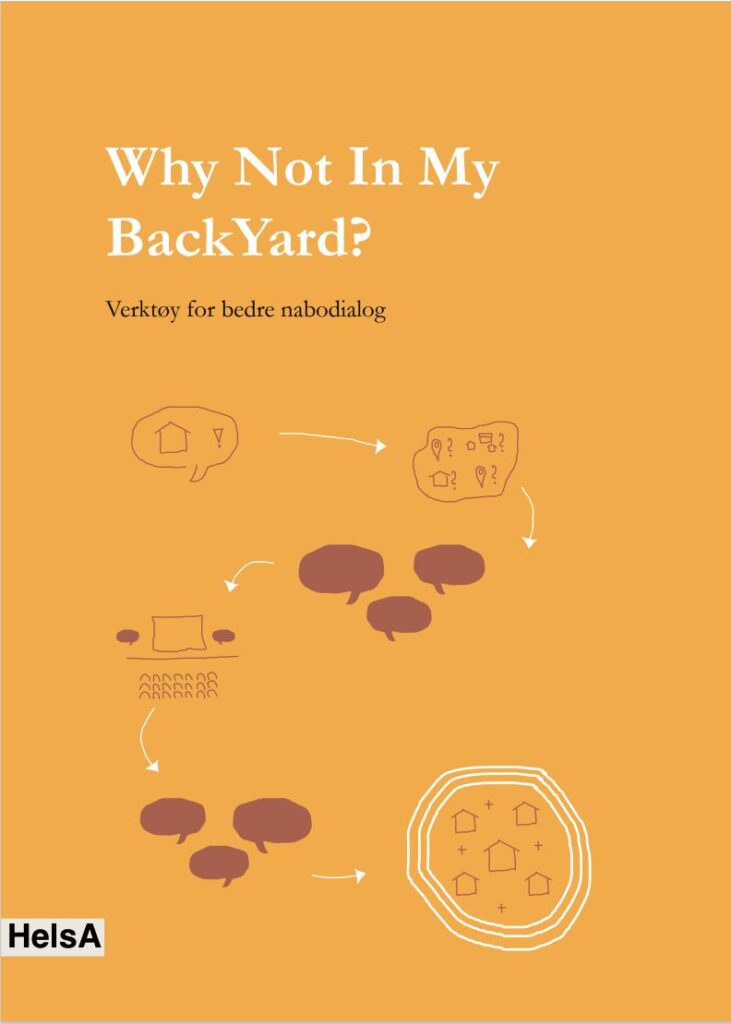Addressing “Not In My Backyard”- concerns: A new dialogue tool
AlcoholMelina Røe, Project Manager and Senior Researcher, NTNU Social Research, Trondheim, Norway Published 23 Apr 2025
NIMBY, which stands for "Not in My Backyard," refers to the reactions of neighborhoods that are skeptical towards new developments, especially when they involve housing for vulnerable people in need of support and welfare services. Protests against such housing, for individuals with substance abuse or mental health challenges, are common. Neighbors often worry that these developments will lead to increased noise and negatively impact the neighborhood's quality and property values. In this article, Melina Røe presents a new tool aimed at addressing these challenges.
With support from the Norwegian State Housing Bank and four Norwegian municipalities, a team of researchers have developed a dialogue tool called “Why NIMBY.” This tool is currently being tested in two of the municipalities, Stavanger and Tromsø. Many stakeholders have high hopes for this tool, as nearly all municipalities and cities have faced neighbor protests when planning housing for vulnerable groups. While we don’t believe that one tool can solve all issues, it can help municipalities start addressing these challenges in a more systematic and effective way.
Are neighborhood protests always wrong?
Neighborhood protests must be taken seriously. They aren’t just about a lack of generosity; they can also signal that residents feel excluded from the municipality’s development plans. In collaboration with the four municipalities in Norway, we’ve created a timeline for neighborhood engagement and communication.
The tool has four main purposes:
- To help the municipality’s administration and politicians raise awareness and implement good dialogue processes when establishing housing projects in existing neighborhoods.
- To provide neighbors and local resources – such as neighborhood and housing welfare associations and other voluntary organizations – insight into the municipality’s plans, fostering better understanding and predictability.
- To encourage active participation and a sense of ownership when new people move into the neighborhood.
- To allow municipalities and neighbors to get to know each other better, strengthening dialogue processes and promoting diverse and good neighborhoods.
To plan a housing project for vulnerable groups effectively, it’s crucial to inform and engage stakeholders early on. This involves understanding the community’s needs and concerns, which can be achieved through surveys, interviews, public meetings, and so on. Providing clear and accessible information about the project is essential, along with establishing channels for dialogue and designated meeting point, such as a phone number or email, for neighborhood communication. Organizing meetings and forums where neighbors and other stakeholders can voice their opinions and ask questions helps build trust and transparency.
The municipality should ensure that both new and existing residents are invited to participate in volunteer community work (light maintenance work called “dugnad” in Norwegian) and other social activities. It is well known that most people, regardless of their life situation, want to feel included in the community, but some need help making those connections.
Methods
We conducted numerous interviews and workshops within and across the municipalities during the years 2023-2024.

Together, we developed timelines and key points for better dialogue:
- Before: How to plan housing projects by informing and engaging in early dialogue?
- During: How to initiate and organize the dialogue?
- After: How to maintain the dialogue?
The tool will be tested in the two municipalities during 2025 and released in a revised and more focused version in the fall.
The article is written by Melina Røe, Project Manager and Senior Researcher, NTNU Social Research, Trondheim, Norway
on the request of PopNAD
 The “Why/Not in my backyard?” project explores and develops tools for facilitating dialogue between municipalities and neighborhoods about housing for vulnerable groups. It addresses the “NIMBY” (Not In My Backyard) challenge, where local resistance hinders the establishment of housing for those with mental health or substance use issues. In this PopNAD-article, project manager Melina Røe guides us through the project.
The “Why/Not in my backyard?” project explores and develops tools for facilitating dialogue between municipalities and neighborhoods about housing for vulnerable groups. It addresses the “NIMBY” (Not In My Backyard) challenge, where local resistance hinders the establishment of housing for those with mental health or substance use issues. In this PopNAD-article, project manager Melina Røe guides us through the project.

